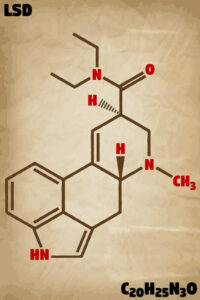Walk the Talk

In his devotional thoughts in My Utmost for His Highest, for February 19th, Oswald Chambers made the following statement: “We have to take the first step as though there were no God. It is no use to wait for God to help us, He will not; but immediately we arise we find He is there. Whenever God inspires, the initiative is a moral one. We must do the thing and not lie like a log.”
The thought applies equally to the real psychological and spiritual drudgery of progressive sanctification and the “progress not perfection” component of change in recovery. Chambers is not advocating a self-willed “pull yourself up by your bootstraps” spirituality, but pointing to how faith and works come together. After quoting from Isaiah 60:1 (“Arise, shine, for your light has come, and the glory of the Lord has risen upon you.”), he said: “It requires the inspiration of God to go through drudgery with the light of God upon it.”
We start with a clear recognition of our powerlessness over sin (or addiction), we have faith that God is more powerful than our sin (or addiction), we surrender our lives to God and then we begin to align our lives with His will. Our initial belief in who God is and what He promises is manifested in our ongoing efforts to live as we believe He has called us to live. After we believe in our hearts and confess with our mouth, we are called to walk the talk. We must do the thing and not lie like a log. “Be holy, for I am holy” (1 Pet. 1:16). Interestingly, this call to holiness in First Peter also includes the exhortation to be sober-minded:
Therefore, preparing your minds for action, and being sober-minded, set your hope fully on the grace that will be brought to you at the revelation of Jesus Christ. As obedient children, do not be conformed to the passions of your former ignorance, but as he who called you is holy, you also be holy in all your conduct, since it is written, “You shall be holy, for I am holy. (1 Pe 1:13-16)
While the Greek term for sober-minded, nēphō, in verse 13 can have the literal sense of abstinent, here it means to be in control of one’s thought processes and not fall into irrational thinking. However, for the addict and alcoholic the term does have a literal sense: be free from every form of mental and spiritual drunkenness (i.e., passion, excess, rashness, confusion). In other words, don’t continue in your former way of life. Resist the craving to once again drink or use drugs. Be holy; walk the talk.
There is a threefold aspect to holiness that corresponds to the three tenses of salvation noted in Romans 5:1-2. That is, because we are justified by faith (a past completed action), we now have (present tense) peace with God through our Lord Jesus Christ. We also have access by faith into the grace in which we stand (present tense). Therefore, we rejoice in hope of the still-future glory of God.
All believers are positionally holy by virtue of their calling and they are summoned to live out their lives in a manner befitting their new position in Christ. With God’s help, they grow and mature “with the life of Christ as their pattern.” The third and final phase of holiness will only be reached when Christ completes the process of salvation upon His return, “when all His own will be like Him, seeing Him as He is, the perfect and glorious Son of God (1 Jn. 3:2).”
Although a believer in Christ must become engaged in this process, his involvement is not something praiseworthy. It is not a contributing factor to his acceptance by God, which is already his as a gift by God’s grace. It’s more that when he is adopted into the family of God, he should reproduce the family likeness and be like his older brother, Jesus. According to The International Standard Bible Encyclopedia, the starting point for this character development is realizing that the mercies of God call for an adequate response: presenting one’s body as a living sacrifice (Rom. 12:1). During this character development we will be tempted to remain conformed to the things of this world, but we are to be transformed–by the renewing of our mind–into a growing likeness to Christ (2 Cor. 3:18).
Similarly, there is a threefold transformation process in recovery, where soberness corresponds to holiness. We would then alter the Scriptural command to be holy in a relationship with Christ to: Be sober for we are sober. Addicts and alcoholics become members of A.A./N.A. by their desire to stop drinking and using drugs. And they are challenged to live out their lives in conformity to the principles of abstinence and sobriety embodied in A.A./N.A. With God’s help, they grow and mature “with the Twelve Steps as their pattern.” The end goal of such a life is to die sober; to live life on life’s terms without turning to drugs or alcohol.
In 1961, Louis R. told the story in the AA Grapevine how President McKinley once gave him a tip for watering his horse. He hadn’t known who McKinley was until someone told him. But he didn’t care as long as the man had given him whiskey-money. Louis was around nineteen at the time.
At an A.A. meeting on November 17, 1951 he raised his hand and asked the speaker if A.A. expected a man who had drunk all his life to stop drinking just like that. The speaker responded that if he’d done it, Louis could too. Louis said, “I figured maybe he was right, so I reached inside my shirt, took out the half pint of wine, and gave it to the man sitting next to me.” He never drank again. After ten years of sobriety, Louis realized he had a bad heart and knew he didn’t have too much longer to live, but he didn’t care. “The main thing I want is to die sober. And with the grace of God and the help of my good friends in Alcoholics Anonymous, I can do it.”
In the AA Grapevine article, “A Small Price to Pay,” an attorney reflected on his 28-year drinking career. With just a few years sober, he noted that some long timers he knew had slipped back into the mess from whence they came and died drunk and miserable. “I know I’ll die someday. But I prefer to die sober and happy, when my time comes.” He commented that eternal vigilance was the price of his freedom from the “thralldom” of his active addiction. “So if the form that my vigilance must take is active participation in AA and a continuing, honest attempt to work the program, that’s a small price to pay.”
Think of recovery as walking up a down escalator. The trick is to continue to walk up the escalator faster than it is moving down. It doesn’t matter how far up the escalator you have gone, even if you can no longer see the bottom from which you started. The moment you stop moving faster than the escalator is, you start going backwards; and eventually you will get to the bottom again. You have to walk the talk until the day you die.
If you’re interested, more articles from this series can be found under the link for “The Romans Road of Recovery.” “A Common Spiritual Path” (01) and “The Romans Road of Recovery” (02) will introduce this series of articles. If you began by reading one that came from the middle or the end of the series, try reading them before reading others. Follow the numerical listing of the articles (i.e., 01, 02, or 1st, 2nd, etc.), if you want to read them in the order they were originally intended. This article is 18th in the series. Enjoy.










